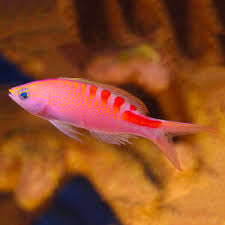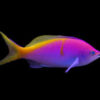Exploring the Role of Dragons in Chinese Feng Shui Charts

In Chinese Feng Shui, a practice that seeks to harmonize individuals with their environment, symbols play an important role in channeling positive energy (Chi) and ensuring prosperity, health, and well-being. One of the most powerful and revered symbols in Feng Shui is the dragon, a mythical creature often associated with strength, good fortune, and protection. The dragon’s presence in Feng Shui charts is not only symbolic but also strategic, with its placement thought to influence the flow of energy and improve various aspects of life. This article explores how the dragon is used in Chinese Feng Shui charts and how its influence can be harnessed to bring balance and prosperity.
The Dragon’s Symbolic Significance in Feng Shui
The dragon is regarded as a symbol of power, vitality, and good fortune in Chinese culture. In Feng Shui, the dragon represents the active, masculine, and yang energy, bringing strength, growth, and protection. It is often contrasted with the phoenix, which symbolizes feminine and yin energy, creating a harmonious balance between these complementary forces. Together, the dragon and phoenix represent the perfect union of opposites, vital for a balanced and prosperous life.
The dragon is also associated with water, one of the Five Elements in Feng Shui (Wood, Fire, Earth, Metal, and Water). Water, in turn, is closely linked to wealth, abundance, and prosperity, making the dragon a powerful symbol for attracting financial success and fostering opportunities for growth.
The Role of the Dragon in Feng Shui Bagua Map
The Bagua map is a key tool used in Feng Shui to analyze the energy flow within a space and its relationship to various aspects of life, such as wealth, health, relationships, and career. The map consists of nine sectors, each representing different life areas. The dragon plays an important role in several sectors of the Bagua map, depending on the specific intentions and needs of the individual.
- Wealth and Prosperity (Southeast): The Southeast sector of the Bagua map is directly associated with wealth and prosperity. To enhance financial opportunities and attract good fortune, the dragon can be used as a symbol of abundance in this area. Placing a dragon figurine or image in the Southeast corner of a home or office is believed to activate the energy of prosperity and help overcome financial challenges. The dragon’s association with water makes it an ideal symbol for attracting wealth, as water represents the flow of money and resources.
- Career and Life Path (North): The North sector, which governs one’s career and life path, is another area where the dragon can be placed to support professional growth and success. The dragon’s strong and assertive energy can help individuals overcome obstacles in their careers, enhance leadership qualities, and attract opportunities for advancement. When placed in the North, the dragon symbolizes the drive, ambition, and courage needed to succeed in one’s professional endeavors.
- Health and Family (East): The dragon can also be used in the East sector of the Bagua map, which is linked to health and family. The dragon’s energy is said to promote vitality, protection, and well-being for the household. By placing a dragon figurine or artwork in this area, Feng Shui practitioners believe it can help strengthen family bonds and ensure a harmonious and healthy home environment.
The Dragon and the Flow of Chi
In Feng Shui, the proper flow of Chi (energy) is essential to create a balanced and harmonious living space. The dragon is used to enhance the flow of Chi in different parts of the home or workplace. Its placement in specific areas is believed to help direct and activate beneficial energy, while also protecting against negative forces.
For example, the dragon is commonly placed in areas with stagnant or blocked energy, where its dynamic and powerful nature can break up blockages and allow Chi to flow freely. When placed near windows, doors, or entryways, the dragon is said to invite positive energy into the space, while also providing protection against negative or harmful influences.
The Dragon and Water Features in Feng Shui
Water features, such as fountains, ponds, or aquariums, are often used in Feng Shui to enhance the flow of positive energy and attract wealth and abundance. The dragon’s natural association with water makes it an ideal companion for water features in Feng Shui arrangements. By combining the dragon with water elements, it is believed that the flow of energy is intensified, increasing the potential for wealth and success.
For instance, placing a dragon fountain in the Southeast corner of a room or garden is thought to activate the energy of wealth and bring prosperity to the home. Similarly, a dragon figurine placed near a flowing water feature in the North sector can support career advancement and open new opportunities. The continuous movement of water symbolizes the ongoing flow of wealth, and the dragon’s presence ensures that this flow is protected and nurtured.
The Dragon’s Influence on Yin and Yang Balance
In Feng Shui, the balance between yin and yang energies is critical for creating a harmonious living environment. While the dragon represents active, yang energy, it is often paired with other symbols, such as the phoenix or the tiger, to create a dynamic balance of complementary forces. The dragon is considered a yang energy, bringing vitality, strength, and outward expansion, which works harmoniously with the yin energy of the phoenix, which represents calm, beauty, and introspection.
By incorporating the dragon into a Feng Shui chart, practitioners seek to create a balanced energy flow that supports both external success and internal peace. This balance is essential not only for wealth and prosperity but also for mental well-being, harmony in relationships, and overall life satisfaction.
The Dragon and Personal Feng Shui Charts
In addition to the general use of the dragon in the Bagua map and Feng Shui charts, personal Feng Shui charts can also incorporate the dragon symbol based on an individual’s Chinese zodiac sign and life aspirations. According to the Chinese zodiac, the Year of the Dragon is considered especially auspicious for those born under this sign, as it amplifies their natural qualities of strength, courage, and leadership. For those born in the Year of the Dragon, using dragon symbols in their personal Feng Shui chart can enhance their inherent luck and amplify their success.
For individuals of other zodiac signs, the dragon can still be used strategically to support specific areas of life, depending on personal goals and aspirations. For example, individuals seeking to improve their wealth, career, or health may find that incorporating the dragon symbol into their Feng Shui practice offers guidance, protection, and empowerment.
Conclusion
The dragon’s role in Chinese Feng Shui charts is both profound and multifaceted. As a symbol of power, protection, vitality, and prosperity, the dragon plays a central role in harmonizing energy flows and attracting good fortune. By incorporating the dragon into specific areas of the Bagua map, using it in conjunction with water features, and balancing its yang energy with other symbols, individuals can unlock its potential to enhance various aspects of life, from wealth to health to career success.
Whether placed in the Southeast for wealth, the North for career advancement, or the East for family harmony, the dragon remains a timeless and powerful tool in Chinese Feng Shui. Its influence extends beyond mere decoration; it is a sacred symbol that, when used correctly, has the ability to shape a harmonious, prosperous, and successful future.

